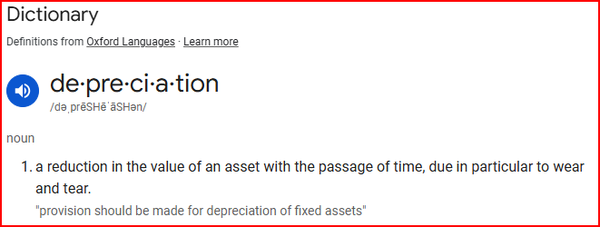Some Real Estate Is Simply Worth Less
When I was younger and less experienced, I held the naive belief that real estate always increased in value. Even now, I could point to hundreds of deals that have appreciated over the past decade without any capital improvements. However, with a bit more experience and a few gray hairs, I now see the truth: some properties are worth *less* 5-10 years later, regardless of the capital invested.
The real estate market doesn’t care how much you’ve invested in your property. It’s worth only what a buyer is willing to pay. In commercial real estate, that value is driven by the rent a property can command. That’s the ceiling.
Many of us real estate investors joyously danced at tax time this year, grateful for the lowered tax bill from depreciation. However, we should look closely at the definition of “depreciation”: a reduction in the value of an asset over time, due in particular to wear and tear.

Hmmm, that sounds a lot like “worth less,” doesn’t it?
In commercial real estate, this concept is often alarmingly accurate. Retail leasing, for example, frequently comes with two huge upfront expenses: leasing commissions and a tenant improvement (TI) allowance. If that tenant fails, you don’t recoup those costs—you pay them all over again for the next one. This is just one example of how wear and tear erodes your value. Let’s look at a few more.
National Retail Fast Food – Single Tenant Net Lease
Ever wonder why so many national brands like Starbucks lease their locations? Because they know their format will evolve over a 5, 10, or 20-year period. Starbucks adding and removing drive-thrus or changing its “third place” experience are prime examples. Rather than getting stuck with an obsolete building and losing money on a sale, they leave that risk with the landlord.
We recently made an offer on a closed Burger King. The seller had paid around $2.5 million when a corporate lease was in place. The tenant paid for three years, then went bankrupt, leaving a dark shell. Vacant, the property now needs a $500k refresh and a $200k leasing commission, or perhaps a total demolition and rebuild for over $1 million. The value of this property today is maybe $600k. The tenant’s failure erased nearly $2 million in value.
The Hotel & Motel Industry
Our team has recently seen a scourge of old motel and hotel properties coming across our desk. Many sellers bought them within the last decade, but the market has changed. A new generation of superior hotel products has made the old, roadside models obsolete. Sure, these properties may still produce some income, but nowhere near enough to justify the original purchase price paid by the current owner. The numbers just don’t work.
There is a trend of investors converting these outmoded buildings into affordable housing, but the purchase prices must be exceptionally low to make the numbers work.
On the other hand, many newer hotels are built with kitchens and distinct bedrooms. This smart design is optimal for future-proofing; in 20-30 years, when the hotel concept is obsolete, the units can be easily rented out as long-term apartments.
Of Course, Office Buildings
No article on value destruction would be complete without a nod to office buildings. The office sector has been overbuilt several times throughout history. Even the World Trade Center, completed in 1973, didn’t reach full occupancy until the mid-to-late 1990s, just a few years before its destruction.
Today, many office buildings in prime locations are being sold for little more than their land value, destined to be torn down or converted to multifamily housing. That said, I’ve started to see a turnaround and am bullish on the office sector’s comeback. I notice a significantly higher impact from businesses with a strong in-office culture compared to those that are 100% remote.
This ties back to my general bullishness on cities. Office buildings offer the same concentration of intelligence you find in vibrant urban centers, where ideas can be developed quickly. This process is painfully slow over Zoom meetings with dozens of faces on a screen, where people awkwardly articulate ideas and the audio cuts out during spirited discussions. In person, when the best ideas are forming, everyone is present, has a voice, and can feel the energy of creation.
Why I Buy Value-Add Real Estate
The commercial deals I pursue require a strategic repositioning to become functional and profitable again. You can’t just raise rents on an underperforming property; you have to fundamentally improve it to *deserve* those higher rents. Vacancy doesn’t fill itself, even after a full renovation. A skilled leasing broker has to work the phones, find the right tenant, and earn their commission by securing a durable income stream—the lease—which is what truly creates value.
All of that said, I do buy the types of deals mentioned below, but the price must match the quality of the asset and its current, in-place income stream.
Have anything like this for sale? I am Buying:
(I Need a $4M-$8M purchase to close by year end.)
- Industrial & Commercial Property, 10K sq. ft. – 250K sq. ft.
- Mobile Home Communities (50 pad minimum)
- Well located Retail Development Sites
- Residential MFR & SFR
- Located anywhere in the U.S.
- Value Add Required-There MUST be a path to push the value
- Ideally long term rented asset with below market rents
Recent Portfolio Exit Volume
- 2021 $54,615,000
- 2022 $54,547,000
- 2023 $57,489,000
- 2024 $52,164,000
- 2025 YTD $46,591,000


